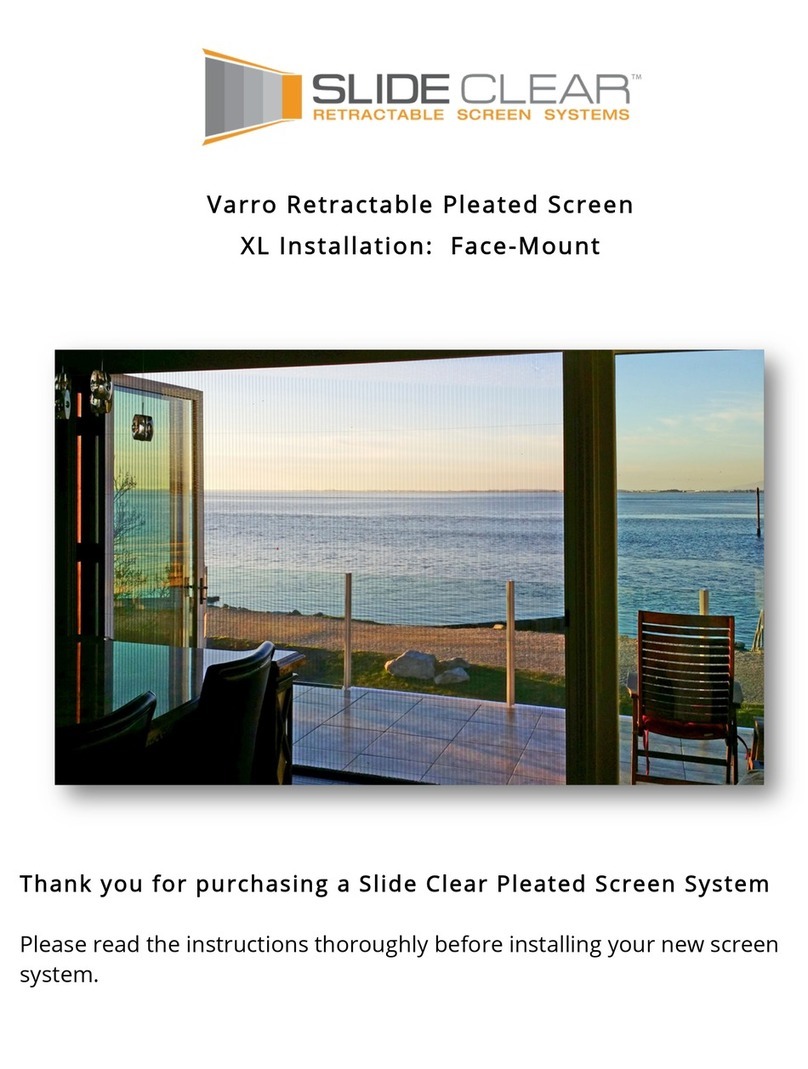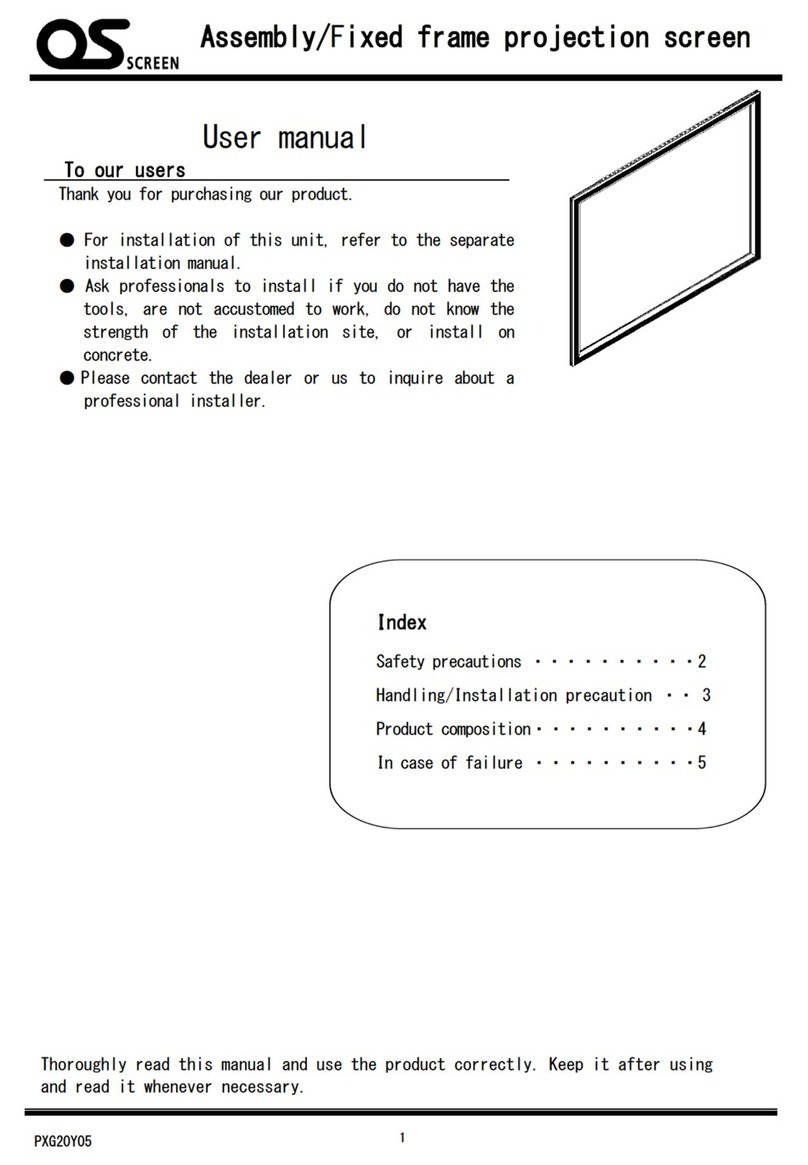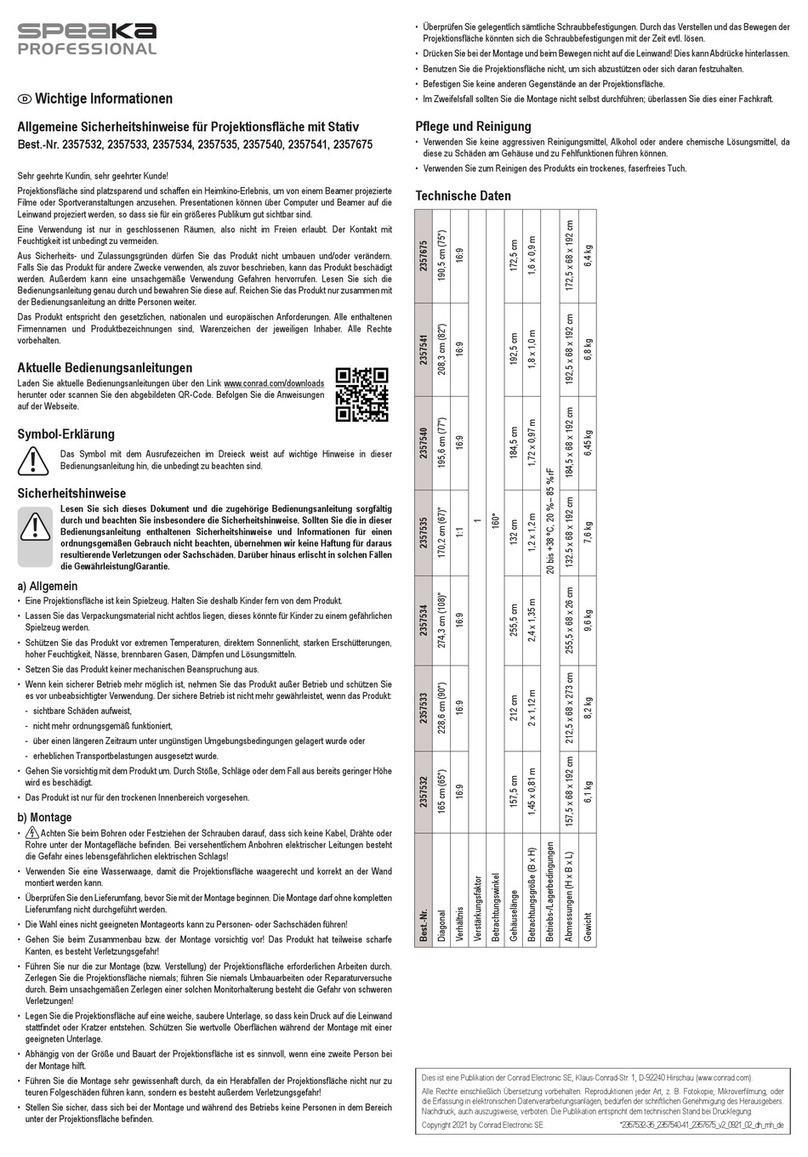Renogy RMS-LFPS-US User manual
Popular Projection Screen manuals by other brands

Draper
Draper E Series Installation & operating instructions

Elite Screens
Elite Screens Elite Tripod Series user guide

Laarhoven
Laarhoven Companion II General assembly instructions

Da-Lite
Da-Lite ExecutiveElectrol Instruction book
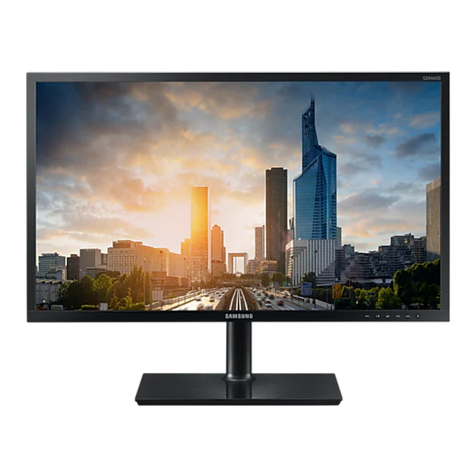
Samsung
Samsung S*H65* user manual
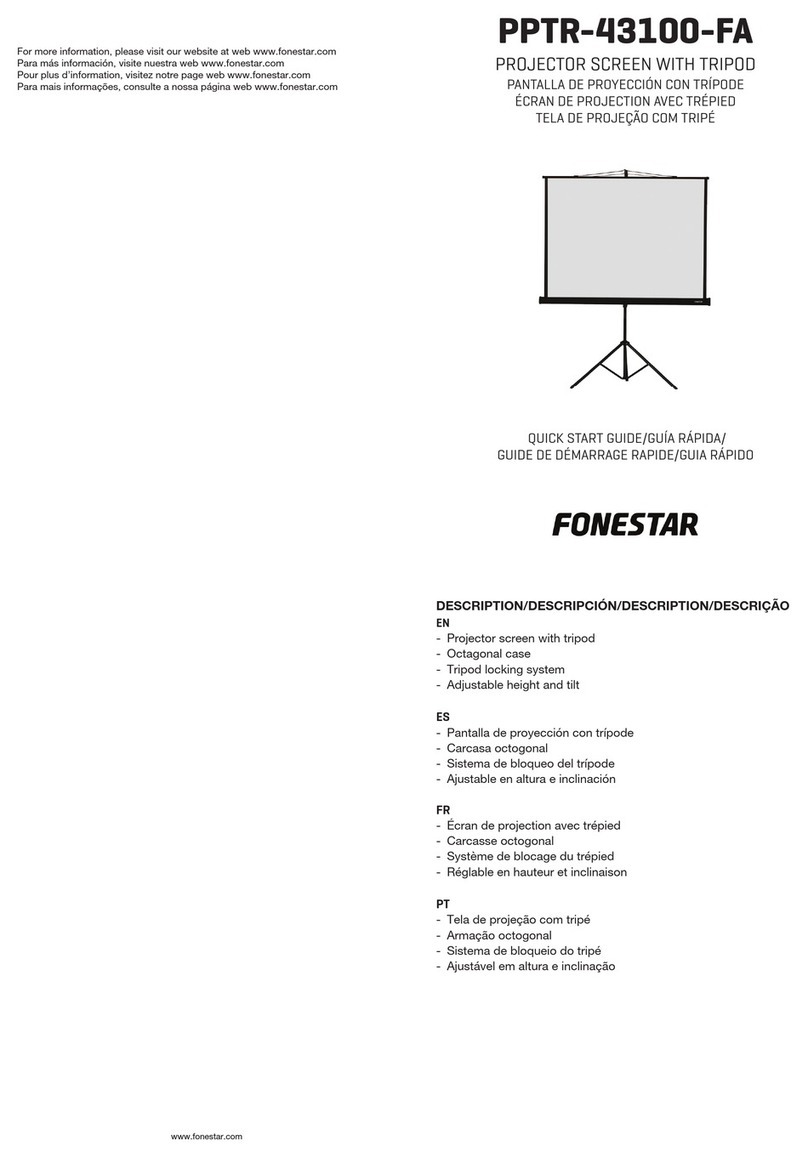
FONESTAR
FONESTAR PPTR-43100-FA quick start guide
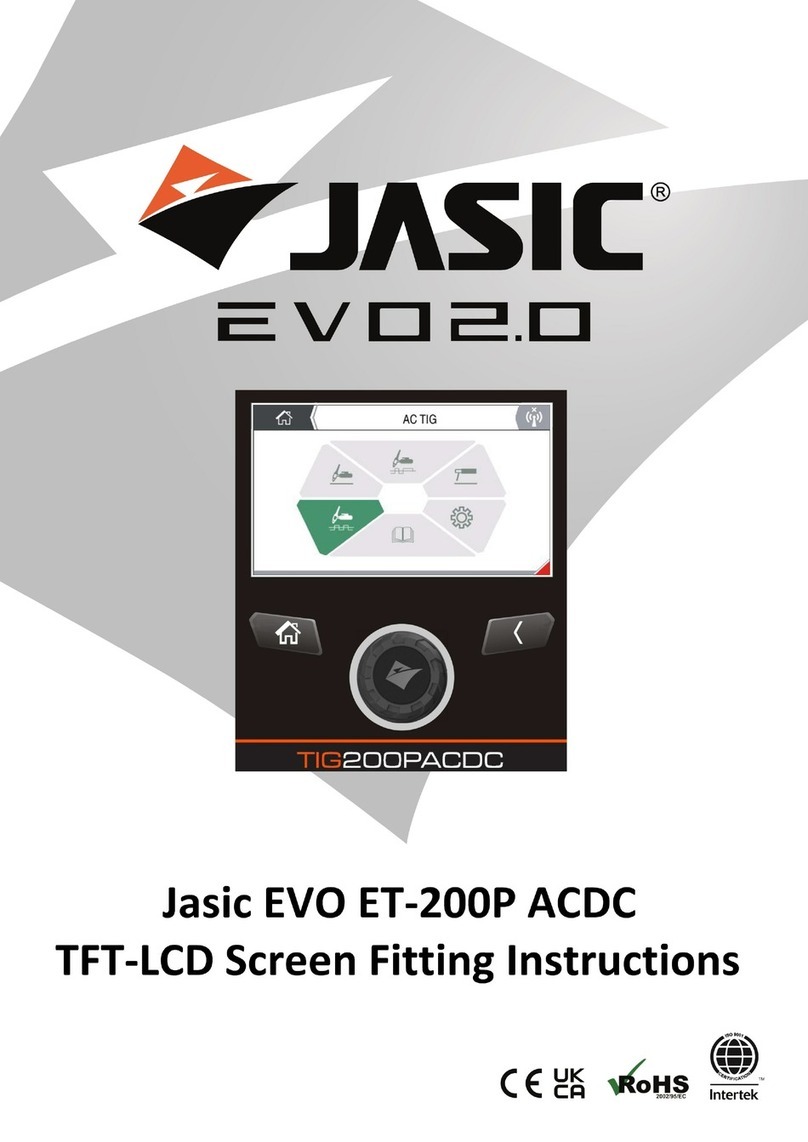
Jasic
Jasic EVO 2.0 ET-200P Fitting instructions
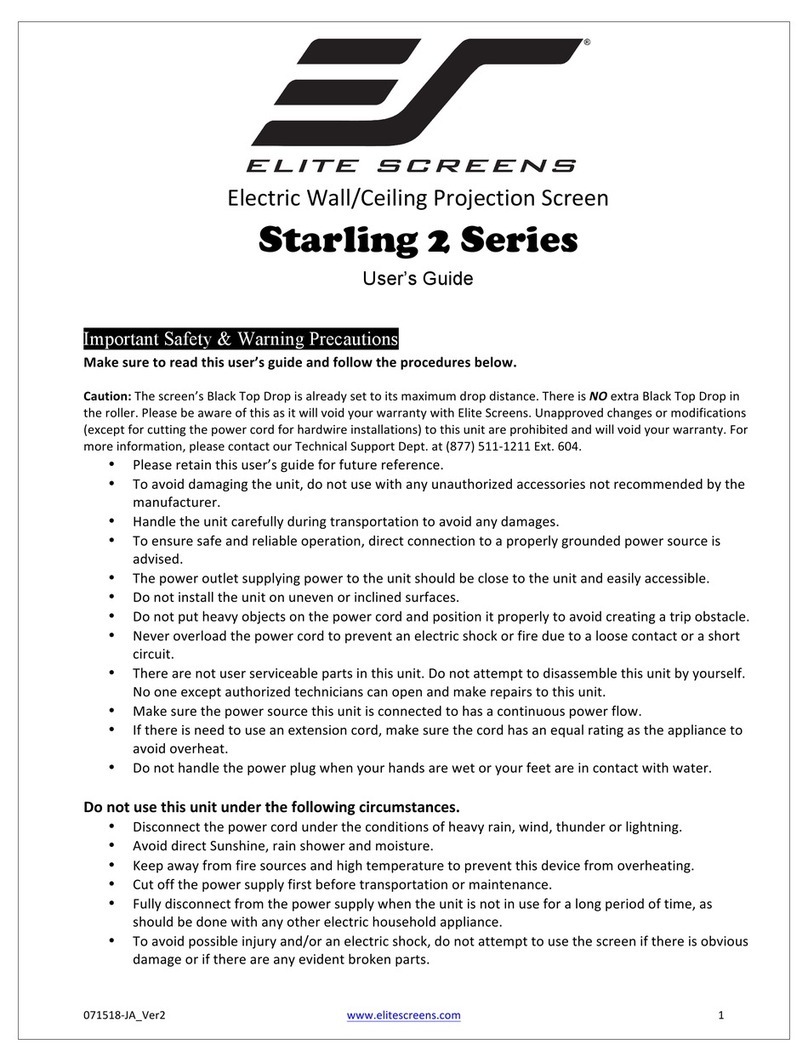
Elite Screens
Elite Screens Starling 2 Series user guide

InFocus
InFocus SC-WALL GRY-92H Instruction guide
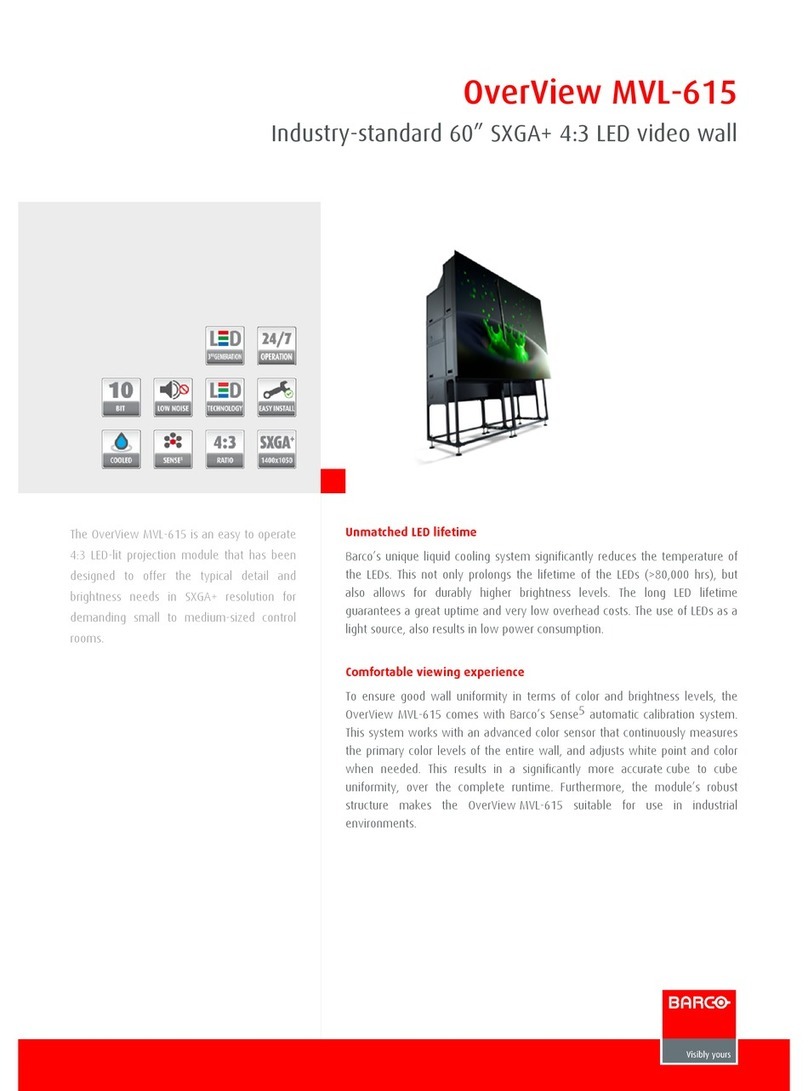
Barco
Barco OverView MVL-615 Brochure & specs

Draper
Draper Envoy Installation & operating instructions
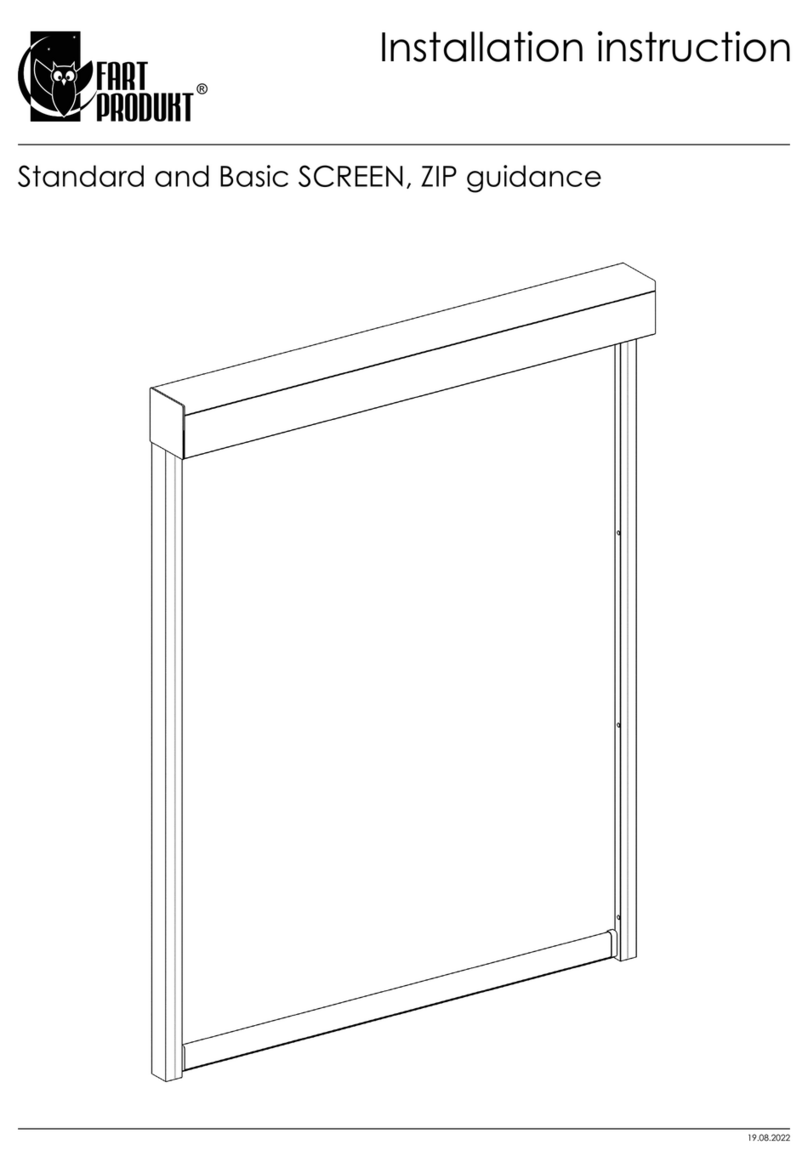
FART PRODUKT
FART PRODUKT Standard SCREEN Installation instruction
